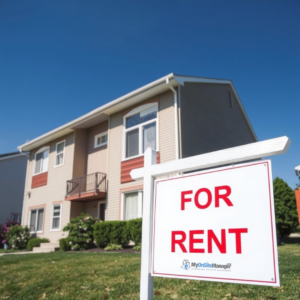
Housing affordability has become an increasingly pressing issue in recent years, with renters dedicating a larger share of their income to housing costs. A December 2024 article from Forbes highlighted that, on average, renters are now allocating 42% of their pre-tax income to rent, a significant increase from 35% in 2021. (Forbes)
The 30% Benchmark: A Shifting Standard
Traditionally, financial experts have advised that individuals spend no more than 30% of their gross income on housing. This guideline has long served as a foundation for determining housing affordability. However, with the current average reaching 42%, many individuals and families are exceeding this threshold, leading to financial strain, reduced savings, and higher levels of personal debt.
For many households, this shift means difficult financial decisions, such as cutting back on essential expenses like healthcare, education, and savings for the future. The increase in rent-to-income ratios suggests that more people are finding it harder to balance their budgets, potentially leading to an increase in economic instability.
Factors Driving the Rise in Rent Costs
Several key factors have contributed to the rising cost of rent:
- Stagnant Wage Growth: While rental prices have increased significantly, wages have not kept pace. As a result, renters are forced to allocate more of their income to housing, leaving less for other necessities and savings.
- Limited Housing Supply: A shortage of affordable housing options has intensified competition among renters, driving up prices. High demand and limited supply have made it increasingly difficult for renters to find reasonably priced housing.
- Inflation and Rising Costs: Inflation has escalated the cost of living, and housing expenses have been a major contributor. As inflationary pressures push up the cost of construction and property maintenance, landlords pass these costs onto tenants through higher rents.
- Urbanization and High Demand: More people are moving to urban centers in search of better job opportunities, education, and lifestyle amenities. This has led to higher demand for rental properties in major cities, further driving up prices.
- Investor Activity in the Rental Market: The increasing presence of institutional investors and real estate firms in the rental market has also contributed to rising rents. Many of these investors prioritize maximizing returns, often leading to aggressive rent hikes.
A Global Challenge: How Other Countries Are Affected
The issue of rent affordability is not unique to the United States. Similar trends can be observed worldwide, with many countries experiencing growing rent burdens:
- United Kingdom: Rent affordability has reached its worst level in over seven years, with tenants spending nearly 30% of their income on rent. Many renters are struggling to keep up with rising costs, especially in London and other major cities.
- Australia: In Australia, middle-income households are allocating approximately 33% of their pre-tax income to rent. Cities like Sydney and Melbourne have seen some of the steepest increases, making housing unaffordable for many residents.
- Canada: In cities like Toronto and Vancouver, renters are facing record-high rent prices, often surpassing 40% of their income. The demand for rental units continues to outpace supply, contributing to ongoing affordability challenges.
Consequences of High Rent Burdens
The increasing proportion of income spent on rent has far-reaching implications for renters and the economy as a whole:
- Financial Instability: With a greater share of income going toward rent, many households struggle to cover other essential expenses, leading to increased reliance on credit cards and personal loans.
- Delayed Homeownership: Higher rent payments make it more difficult for renters to save for a down payment, delaying or preventing homeownership altogether. This shift has long-term implications for wealth accumulation and financial security.
- Widening Economic Inequality: Lower-income households are disproportionately affected by rising rents, exacerbating socioeconomic disparities and limiting upward mobility.
- Reduced Consumer Spending: When renters dedicate a significant portion of their income to housing, they have less disposable income to spend on goods and services, potentially slowing economic growth.
Potential Solutions to the Housing Affordability Crisis
Addressing the growing rent burden requires a combination of policy changes, economic initiatives, and community-driven efforts. Some potential solutions include:
- Government Policy Interventions: Governments can implement rent control measures, offer tax incentives for affordable housing development, and increase funding for public housing projects.
- Wage Growth and Job Market Improvements: Policies that promote wage growth and job stability can help renters keep up with rising housing costs.
- Expansion of Affordable Housing: Encouraging the construction of affordable housing units can alleviate pressure on the rental market, reducing prices over time.
- Tenant Protections and Regulations: Stronger legal protections for tenants, including limitations on excessive rent increases and eviction protections, can help stabilize housing affordability.
- Financial Education and Assistance: Providing renters with financial literacy programs and rental assistance programs can help them better navigate the housing market and manage their budgets effectively.
Conclusion
The escalating rent burden is a significant challenge that affects millions of people across the globe. As the cost of housing continues to rise, it is essential for policymakers, businesses, and communities to work together to address affordability issues and ensure that housing remains accessible for all. By implementing comprehensive solutions, we can create a more stable and sustainable rental market that supports both renters and economic growth.
Source: Forbes: Average Consumer Rent Is 42% Of Pre-Tax Income, Report Finds
